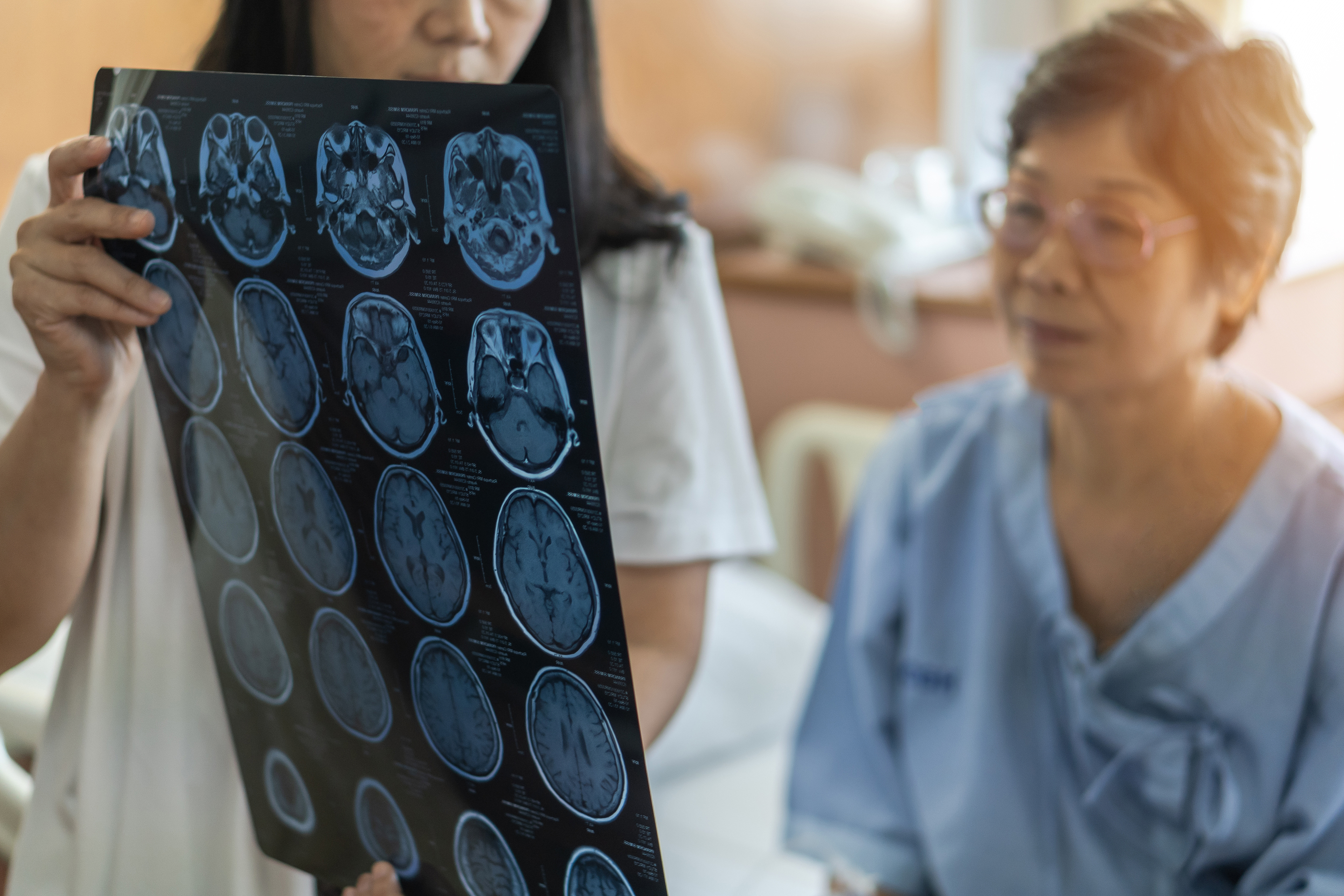Women’s Health Research at Yale today announced funding for three studies investigating sex differences in stroke, endometrial cancer, and alternate pain relief for women recovering from past opioid use who are giving birth via cesarean section.
“The center is focusing our research efforts on women in the time of the COVID-19 pandemic and accelerating our work to address the enduring and pressing medical conditions that continue to affect women’s lives,” said WHRY Director Carolyn M. Mazure, Ph.D. “These three new studies will advance our understanding and capacity to reduce disease and death caused by cardiovascular disease, cancer, and addiction.”
The new studies explore these important questions: Can immune responses known to be sex-specific affect the outcome of stroke and provide a basis for improved neurologic interventions? Can lowering insulin levels help women avoid an overgrowth of abnormal cells in the uterine lining that leads to endometrial cancer and teach us more about how cells become cancerous? And: Can a steroidal medication reduce pain and thus the need for narcotics in women with opioid use disorder undergoing childbirth through a cesarean section?
“We are dedicated to pursuing answers to critical health questions that can improve the lives of everyone,” Mazure said. “Medical science provides the way forward in using these sex-and-gender differences to our advantage in understanding these disorders.”
We are dedicated to pursuing answers to critical health questions that can improve the lives of everyone.
WHRY Director Carolyn M. Mazure, Ph.D.
Stroke
Recent advances in the study of sex differences have highlighted distinct differences in the way brain tissue responds in women and men after acute brain injuries. However, little is known about sex-specific cellular responses in the brain following a devastating type of stroke called an intracerebral hemorrhage, limiting the ability of researchers to develop effective therapies that account for these differences
Every year in the United States, 40,000 to 67,000 people experience intracerebral hemorrhage, caused by the rupture of a penetrating artery within the brain that leads to bleeding inside brain tissue. This mass of blood within the brain sets off an immune response, activating white blood cells called brain macrophages (microglia) and calling in other white blood cells to the brain. This initial response leads to additional collateral damage, killing brain cells and impairing the bodily functions they control.
There is currently no effective, targeted treatment for this condition, and an average of between 35 to 52 percent people with intracerebral hemorrhage die within 30 days. After six months, only 20 percent of survivors are able to live independently.
Funded by WHRY, Dr. Lauren Sansing, Associate Professor of Neurology, will investigate the different immune responses of women and men to intracerebral hemorrhage to provide the basis for improved neurologic interventions.
Dr. Sansing will use a technique known as single-cell RNA sequencing (scRNAseq) analysis that isolates individual cells to produce genetic data on how different cell types function in response to this specific form of stroke. This method captures differences in cell states across thousands of key types of immune cells in the brain in a single set of experiments. Assessing how each single cell responds to this type of brain injury can inform us about the types of immune cells responsible for injury and those that help in repair and recovery. Of great medical interest, this research provides us with data on which type of immune cell does what, and when, and how this is different for women and men.
Dr. Sansing hypothesizes that her animal model will show that older females have a distinct cellular response after intracerebral hemorrhage, including enhanced recruitment of different types of immune cells than males, thus informing different treatment approaches for females and males.
“The molecular pathways of damage and recovery after intracerebral hemorrhage represent robust targets for therapeutic intervention,” Sansing said. “We know some immune responses are different for women and men, but the vast majority of laboratory studies utilize young males. Our new study will allow for global and in-depth analyses of differences across sexes and ages that can lead to investigation of effective therapies for women and men.”
Endometrial Cancer
In the United states, experts estimate that by the end of 2020 about 65,000 women will have been diagnosed with cancer of the uterus, including the uterine lining known as the endometrium. A total of about 12,000 women will die of the disease.
Diagnoses of endometrial cancer are growing fastest among premenopausal women. In particular, the disease is twice as common in overweight women as in women of a healthy weight, and it is more than three times as common in obese women.
An overgrowth of abnormal cells in the uterine lining called atypical endometrial hyperplasia (AEH) develops into endometrial cancer in about 30 percent of cases, providing a unique window into cancer development and an opportunity for preventative therapy. Current treatments include removing the uterus through hysterectomy — which ends a woman’s capacity for reproduction — and blocking estrogen action in the endometrium through administration of progestin — a synthetic hormone similar to naturally occurring progesterone. Importantly, this latter treatment has a low success rate in preventing cancer.
In pursuit of better outcomes, Dr. Clare Flannery, Associate Professor of Endocrinology and of Obstetrics, Gynecology, and Reproductive Sciences, will determine which obesity-induced changes in the endometrium will lead to the atypical endometrial tissue (hyperplasia) that leads to cancer. Of particular interest are higher insulin levels, a feature of obesity in premenopausal women that can also contribute to irregular menstrual cycles. Irregular menstrual cycles expose the uterus to chronically excessive levels of the hormone estradiol without the protective effect of progesterone.
With the support of a new WHRY Pilot Project grant, Dr. Flannery will examine how lowering insulin levels can help women avoid atypical endometrial hyperplasia that leads to endometrial cancer.
“Therapy for atypical endometrial hyperplasia has remained unchanged for several decades and is inadequate for the increasing number of women who will need it,” Flannery said. “Our work is attempting to change the paradigm of endometrial cancer development, allowing additional therapies to be used in its prevention.”
Dr. Flannery will examine the effect of high levels of insulin and estradiol treatment in an animal model, comparing the findings to archived samples of AEH and normal endometrium tissue from women. She anticipates finding specific ways in which insulin disrupts cell physiology toward AEH, particularly in the presence of estradiol.
“Since many medications will lower insulin and have few side effects, their use is only limited by the lack of data to support a therapeutic rationale,” Flannery said. “This pilot study, once completed, can serve as data to initiate a large-scale clinical trial of insulin-lowering medications in women with AEH for whom progestin therapies have failed.”
Opioid Addiction
Over the last 20 years, more than 200,000 Americans have died from prescription opioid overdoses, and women are particularly vulnerable to this epidemic because of differences in pain sensitivity compared to men, and women are more likely than men to begin their use of opioids through prescription misuse. Women are also more likely to be prescribed opioids with other medications, which further increases the likelihood of an overdose. From 2008 to 2012, one in three women of reproductive age filled a prescription for an opioid medication.
The most recent data suggest between 14 and 22 percent of women have filled an opioid prescription during pregnancy. Between 1999 and 2014, opioid use rates during pregnancy increased by 400 percent.
Two recent statewide studies in Utah and Colorado found that postpartum opioid-related overdose was the leading cause of maternal mortality, attributed to various uses of opioids to control pain, such as postoperative pain after a cesarean section delivery. Pain is an especially worrisome factor for patients with opioid use disorder (OUD) because such patients have developed a tolerance to opioids requiring higher doses to achieve adequate pain control.
Currently, obstetricians utilize medication assisted treatment (MAT) for pregnant patients with OUD, prescribing drugs such as methadone or buprenorphine to optimize health outcomes before and after birth. But relapse risk for women with OUD is increased in the postpartum period, even with MAT. And with relapse comes repeated cycles of withdrawal and increased risks of infectious diseases, overdose, and death.
Although current guidelines in obstetric analgesia encourage alternates to opioids as treatments for pain management in patients with OUD, there have been no studies of such patients to guide these strategies.
With a new WHRY grant, Dr. Audrey Merriam, Assistant Professor, Department of Obstetrics, Gynecology, and Reproductive Sciences, will explore for the first time if an existing steroidal medication can reduce pain and thus the need for narcotics in women with opioid use disorder undergoing a cesarean section.
“Women with opioid use disorder on medication assisted treatment are more likely to experience higher pain levels and require higher opioid doses after cesarean section deliveries than women without an opioid use disorder,” Merriam said. “If proven effective, our intervention to target postoperative pain in this high-risk group would help to reduce opioid use after delivery and lower the risk of relapse.”
Dr. Merriam will test if the steroid dexamethasone reduces pain among 40 patients undergoing a cesarean section. The study design includes an experimental group receiving the steroid and a control group receiving a placebo, with the researchers evaluating the patients’ postpartum scores on a series of pain questionnaires and the amount of opioids they require. Dr. Merriam hypothesizes that women receiving the dexamethasone treatment will have lower average pain scores and require a lower average dose of narcotics during the postpartum inpatient stay.
“This study offers a promising method to decrease pain and narcotic use in patients with a past history of opioid use,” Merriam said. “And because of Yale New Haven Hospital’s diverse patient population, we believe our results could also be applied to populations of women throughout the United States.”


